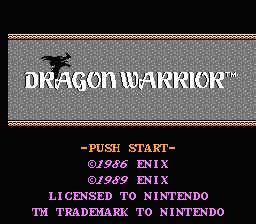Quarantine Control #2: In Our Humble Ice Caves

Welcome to the second installment in our Quarantine Control series, following the start last week. We’re still staying at home as much as we can as the COVID-19 pandemic continues to spread around the world in order to flatten the curve in our local precincts, meaning we’ve been watching and playing a bunch of stuff to pass the time. Here’s what some of the writers here have done in the last week.
Joseph Daniels
This week for Quarantine Control I have a pair of Final Fantasy related offerings for you, to go with the Dragon Quest/Final Fantasy/eventually Kingdom Hearts retrospective series running on Wednesdays. And don’t forget next Wednesday is my article about the very first Final Fantasy. If you want to celebrate the increasingly inaccurately named Final Fantasy series with me, I hope you enjoy the following.
No One Can Know About This (2017)
Source: Spotify (among other places); video feed on YouTube
Episodes: Ongoing
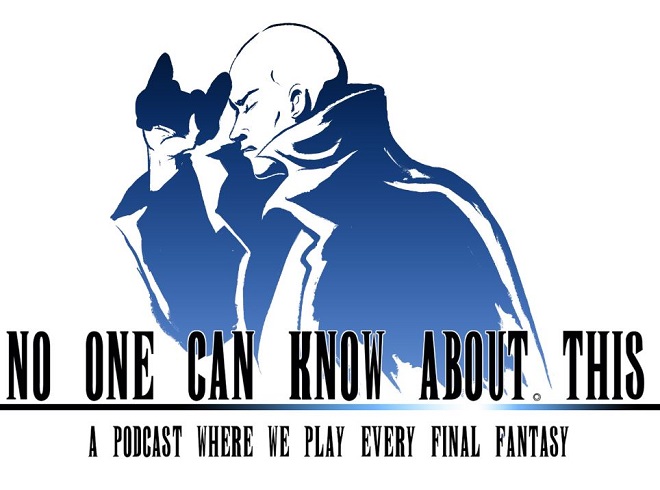
NOCKAT – pronounced “no cat” – works best if you’re already somewhat familiar with the games so that you can picture what’s happening in your mind’s eye as you’re listening to two friends speculate about plot details, character motivations, the nature of the world, and so on. The first two seasons revolve around what is essentially a blind let’s play, given neither host has played Final Fantasy or Final Fantasy IV. One host has played some of Final Fantasy VI, so season three is only a partially blind let’s play. And it was stated early on that they wanted to get to Final Fantasy VII as quickly as possible, so they basically played only the main numbered games that released in North America in chronological order, in order to play Final Fantasy VII for season four.
I know I said it works best if you are familiar with the games, but the hosts do such a good job describing what’s happening for listeners that you might be able to figure out what’s happening even if you’ve not played the games in question. If anything, this podcast might get you interested in playing the older games yourself if you haven’t already.
Oh, and starting with season three, there is a video feed that defeats the purpose of being an audio substitute for Let’s Plays.
Final Fantasy XIV: Dad of Light (2017)
Source: Netflix
Episodes: 8
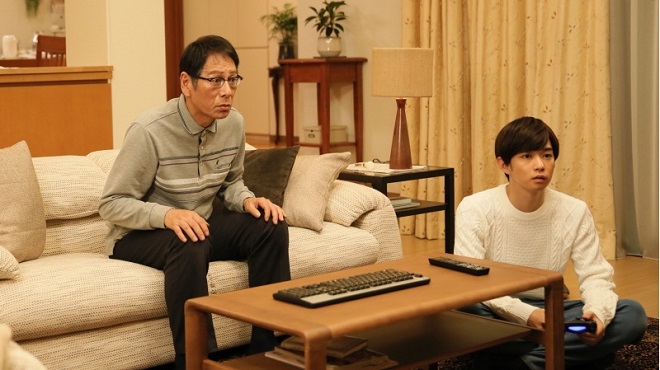
If you’ve been paying attention to Final Fantasy lately, you’ll notice that everything has to be this cross-media experience now. Final Fantasy XII is part of the Ivalice Alliance, a group of games that take place within the same setting and which all released within a short period of time. Final Fantasy XIII was a trilogy but was originally announced as part of a continuity known as Fabula Nova Crystallis. Final Fantasy XV, originally also announced as part of that continuity, later became a continuity of its own, adding a movie, an animated series and several tie-in games, some of which are no longer available and were pulled from the market very quickly.
One could argue that Final Fantasy XIV doesn’t need a cross-media experience, given that it still charges a monthly subscription, is constantly adding things to the cash shop and releases a new expansion every two years like clockwork. That said, if anyone can find a way to adapt Final Fantasy XIV to television, it’s Square-Enix.
The way they chose to do it was to create a show inspired by the true story of a young man who rekindled a relationship with his father by playing Final Fantasy XIV with him. Dad of Light takes place both in the real world and in the world of Eorzea, and it’s made clear from the very beginning that the scenes within Final Fantasy XIV represent players in the real world. This is no .hack// or Sword Art Online, and players pop in and out as they would if they were playing a regular MMO.
A fair warning: if you’ve been playing Final Fantasy XIV from the beginning and have a somewhat intimate knowledge of when certain things were added to the game (the Gold Saucer, the Most Gentlemanly pose) or certain things were changed (the example I want to give is a major spoiler for episode seven and I don’t feel like telling Geoff to put a spoiler warning on this post), then there’ll be plenty of things to be bothered about. If you’re a nit-picker, then there’ll be plenty more things to be bothered about. For the rest of us, the series is charming in how it dresses up a standard Japanese drama with elements from Final Fantasy XIV, including music from the game that plays during surprisingly appropriate moments. Even the jingle that plays when a character accepts a quest in A Realm Reborn is used during a scene early in the series when main character Akio is given a task at work.
I am planning on including Dad of Light in my retrospective series, but with how many titles are on my list, I expect it’ll be a few years before I’ll be able to get around to writing about it. This will have to do for now.
Geoffrey Barnes
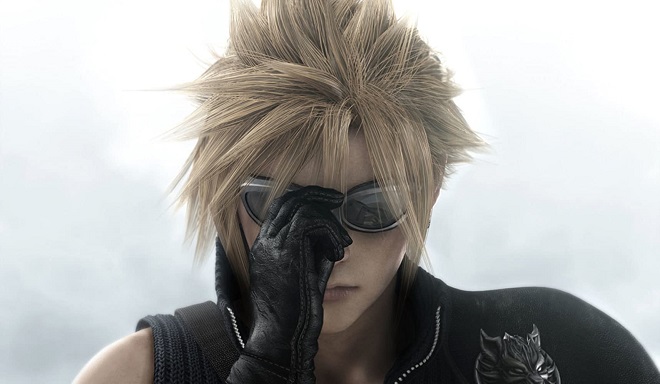
My original plan for this week’s Quarantine Control was to discuss my progress in Final Fantasy VII Remake, which released last Friday. I figured Amazon would have my copy to me by now despite their focus on delivering essential orders, and that it would only be a few days late. As of this writing, I’m still waiting for my copy, despite other writers here having theirs and starting it. It’s like someone at Amazon is holding a grudge against me. Maybe it was all those retweets from people deservedly criticizing Jeff Bezos.
Fortunately, like any semi-competent blogger, I had a plan B just in case this went wrong: Rewatching Final Fantasy VII: Advent Children. It was last week when I realized that I hadn’t watched it since the US home video release in 2006, despite having a shrink-wrapped copy of the Advent Children Complete Blu-ray on my shelf for years. There wasn’t a better time to throw it in the PS4.
I didn’t remember every facet of the movie from 14 (!!) years ago, but I did remember the critiques I made about the film despite it being a visual splendor. Cloud was a mopey mess throughout most of it, brushing off all the friends who wanted to help him. Most of the returning main characters from the game did next to nothing of note. The movie also has a paper-thin excuse for temporarily reviving a certain popular character in particular. This marked a good time to see if I felt the same way about the film, especially with the Complete version that provides more scenes to help with character development. To my surprise, I came away enjoying it despite still having some of those same criticisms.
Don’t get me wrong: It’s hardly the most riveting movie around, and I wouldn’t recommend it to unsuspecting moviegoers given its ties to Final Fantasy VII proper. But as a popcorn film, it’s perfectly serviceable.
Advent Children runs into a common wall that sequels to self-contained works slam into, by creating a conflict that feels out to place compared to what occurred in the original game. By the end, the Geostigma illness infecting Midgar (and presumably other places as of this film) along with the presence of the three very pretty sons of Sephiroth feel like big excuses to bring the man himself back to have him fight Cloud again. To be fair, the whole battle is a hell of a sight to behold, and it’s not like fans weren’t asking them for it. It’s not a very strong movie narratively, but it’s easy to forgive thanks to the sheer levels of non-ecchi fanservice involved.
The extra scenes admittedly do help. Cloud’s reason for being mopey isn’t out of character, considering he’s suffering from the Geostigma disease for nearly the entire film. He chose to suffer through it alone thanks to how contagious it is, an ostensibly logical decision on the surface despite it being a misguided path to take. This ends up being an excuse to bring back more dead characters. But I’d be lying if I said I didn’t enjoy all this, though to no surprise, it requires knowledge and nostalgia for the original FFVII to enjoy.
Advent Children isn’t the visual splendor it was back when it originally released in 2004 by 2020 standards, but it’s still pretty in parts. The many action sequences are a joy to watch thanks to good choreography, and the character models are nicely detailed while managing to avoid the dreaded Uncanny Valley that The Spirits Within ran into headfirst. It’s a pity a good portion of the film is extremely grey and brown, almost resembling several AAA games from the last console generation. This is done for symbolic purposes, but it makes the movie’s environmental pans less pleasant to look at than they should be.
Is Advent Children a legitimately good movie? No. Is it a fun one? Sure. Sometimes, that’s all you need. I went into the movie this time simply expecting an entertaining film rather than an wanting an extremely worthy successor to FFVII, and enjoyed it more this time around.
Hopefully I’ll have some impressions for FFVII Remake to contribute by this time next week, or I’m going to really dive into conspiracy theories about Amazon trying to screw me.
Angela Moseley
I wish I could say I was successfully staying home to flatten the curve, but like Joseph, I’m also an essential worker. Fortunately, my weekends haven’t changed much since the pandemic struck. My contribution to this column nicely coincides with my desire to watch streaming shows on break at work and watching movies on Saturdays with friends via Discord.
Ushio & Tora (2015)
Source: Crunchyroll
Episodes: 39
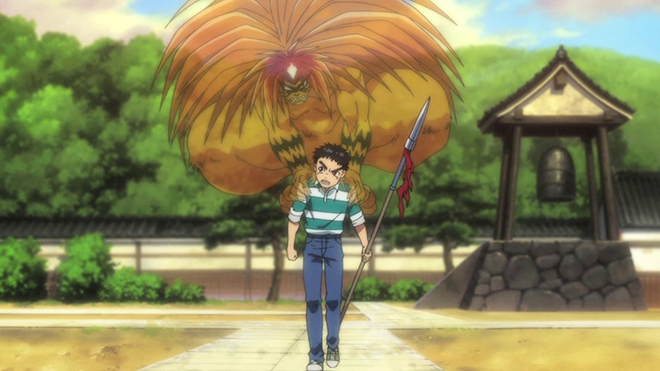
This isn’t the first time I’ve taken a crack at writing about Ushio & Tora. Back in 2018 I made a huge push to purge my Crunchyroll queue. I had started the series in 2015, liked what I saw, but let it go by the wayside for too many years. Earlier this year I took a pass on much of the current anime airing so I could thin my backlog starting with Ushio & Tora. Both seasons were enjoyable from start to finish.
One day Ushio Aotsuki comes upon a youkai pinned to the wall of his family’s temple by a large spear. The monster informs him that he’s been imprisoned by the Beast Spear for 500 years and to free him. When Ushio asks what the youkai will do when freed he replies that he’ll eat him and then go on to devour other humans. The teenager who’s surprisingly genre savvy shoves the spear deeper into the beast to makes sure he doesn’t escape. Unfortunately, Ushio is forced to change his mind when his friends are attacked by other youkai. He promises to free the pinned beast if he’ll get rid of the other monsters.
The youkai agrees before trying to eat Ushio, but is unable to when the Beast Spear suddenly transforms the teenager into a powerful warrior. After the battle, the beast is given the name “Tora” for his tiger-like appearance. Curious and still wanting to eat the boy, Tora decides to haunt him looking for an opportunity. In the meantime, using his newly acquired abilities from the spear and with help from his new partner Ushio defends family, friends, and strangers from other supernatural beasts. The release of the Beast Spear and the increase in youkai means that an incredibly powerful and evil entity is about to awaken from its slumber.
Ushio & Tora is an adaptation of Kazuhiro Fujita’s manga series of the same name that ran from 1990 to 1996. There was a 10 episode OVA that ran from 1992 to 1993 that adapted some of the manga. Thankfully, the 2015 series finishes the entire story. I love that MAPPA decided to keep the original 90s character designs and overall feel of the world in its new animation. Except for the coat of digital paint and being in HD, you’d be hard-pressed to believe this was a modern series. It’s also great to have a shonen series that doesn’t run for hundreds of episodes.
Ushio & Tora is a heartfelt monster of the week show. Ushio is both a hot-headed and surprisingly kind kid. What’s nice is he’s openly shown how much he cares for others to the point of shedding tears for strangers. Meanwhile, Tora could be classified as a jerk with a heart of gold. He has to be spurred on by Ushio to do the right thing and help others, but eventually it becomes clear the two have formed very deep bonds. Better yet, the youkai themselves are eventually humanized as they’re not all mindless beasts to be slain, and not all humans are good. Friendship and acts of kindness can endear both man and monster. Those acts of kindness and bonds pay dividends during the final battle with the series’ big bad, Hakumen no Mono. I admit I was so touched by these moments of friendship at times that I teared up a little.
If you enjoy old school anime action series, don’t sleep on Ushio & Tora.
Balto (1995)
Source: Blu-ray
Episodes: 1 movie
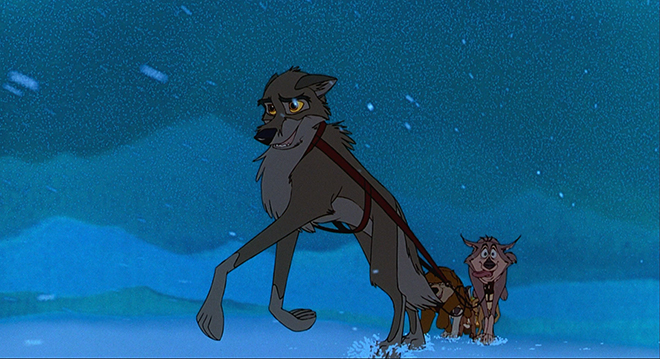
It’s funny how a global pandemic can make you finally do things you’ve put off for so many years. In my case, it took me over 20 years to finally sit down and watch the movie Balto with friends from “The Balto League,” a fan group I formed back in 1999. (For you longtime readers wondering why Damage Control was hosted on the domain theicecave.org for so many years, yes that was part of my Balto fansite named for a scene in the movie.)
Balto can be considered a classic. Released on December 22, 1995 by Amblimation studios, this movie was loosely based on the true story of a sled dog named Balto. With Steven Spielberg as an executive producer, Simon Wells as director, James Horner producing the soundtrack and an all-star cast consisting of Kevin Bacon, Bob Hoskins, Bridget Fonda, and Phil Collins , Balto had all of the makings of greatness. Unfortunately, this animated movie had the misfortune of releasing within a month of Toy Story, leading to financial disaster for the film. The movie had a budget of $31 million, but only made $11.3 million at the box office. The results were so damaging that Amblimation closed its doors. There was one bright spot. The movie performed so well on video that two sequels were created by Universal Pictures. Despite being disaster at the box office, Balto has a strong following to this day.
In 1925 a deadly diphtheria epidemic broke out in the small Alaskan town of Nome. Between Nome’s remote location and a harsh winter, delivering the life-saving serum is all but impossible by plane, train, and boat. Instead, the town gathers up its fastest sled-dogs and sends a team out to pick up the medicine from Nenana, located hundreds of miles away. Balto is a half-wolf, half-husky living on the outskirts of town. He was raised by Boris, a Russian goose and is also friends with Muk and Luk, two polar bear cubs. In town the beautiful husky, Jenna and her child owner, Rosie are his only friends. When Nome is plagued by diphtheria, Rosie falls ill and Balto wishes to help her.
If being feared by the humans wasn’t enough, the wolfdog is also bullied by the sled dogs in town led by the champion malamute, Steele. He manages to keep Balto off the sled team chosen to retrieve the medicine. Opportunity strikes when Steele’s team gets lost on the way back from Nenana. Not wanting Rosie to die, Balto sets off to find the team and lead them home. He’s also joined by Boris, Muk, Luk and Jenna. Circumstances force everyone except for Balto to return early to Nome. When he finds Steele and the sled dog team, Steele is ousted as lead dog and Balto has his chance to bring the medicine home.
Lots of liberties were taken with Balto. For starters the real Balto was just a husky. Second, the trip to bring the medicine back to Nome was done by relay with 20 sled dog teams fighting the harsh wilderness. Some teams lost dogs. One team led by the talented dog, Togo traveled the majority of the journey. While the team led by Balto finished the final leg of the journey and received all of the credit by the press. Some of this was actually addressed in the 2019 Disney+ movie, Togo.
Balto was more about the characters and less about hardships of the journey. It was how an outcast could become a hero by beating the odds and helping save the town that shunned him. Balto’s treatment as an outcast stuck with me because I found him being judged for what he was, not who he was to be extremely relatable. Given all of the rough treatment he endured by the townsfolk and dogs, he could have chosen to look the other way. Instead, he rose to the occasion just like the real dogs did in the 1925 serum run.
As for the sequels Balto II: Wolf Quest and Balto III: Wings of Change, watch them if you’d like. They are available on Hulu along with the original movie. Even so, Balto II is a serious step down in animation quality and has the feel of a badly written fanfic. Balto III is an improvement over the second movie and captures more of the feel of the original. Though in comparison, it feels like a Saturday morning cartoon.
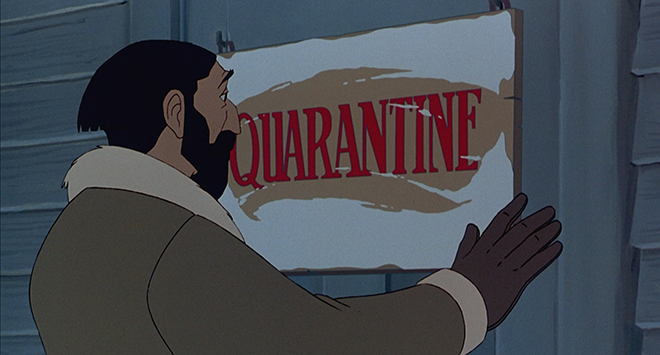
Balto is very much on topic given the current COVID-19 pandemic.
That’s all for this week. Please stay tuned for the next installment next Thursday.





